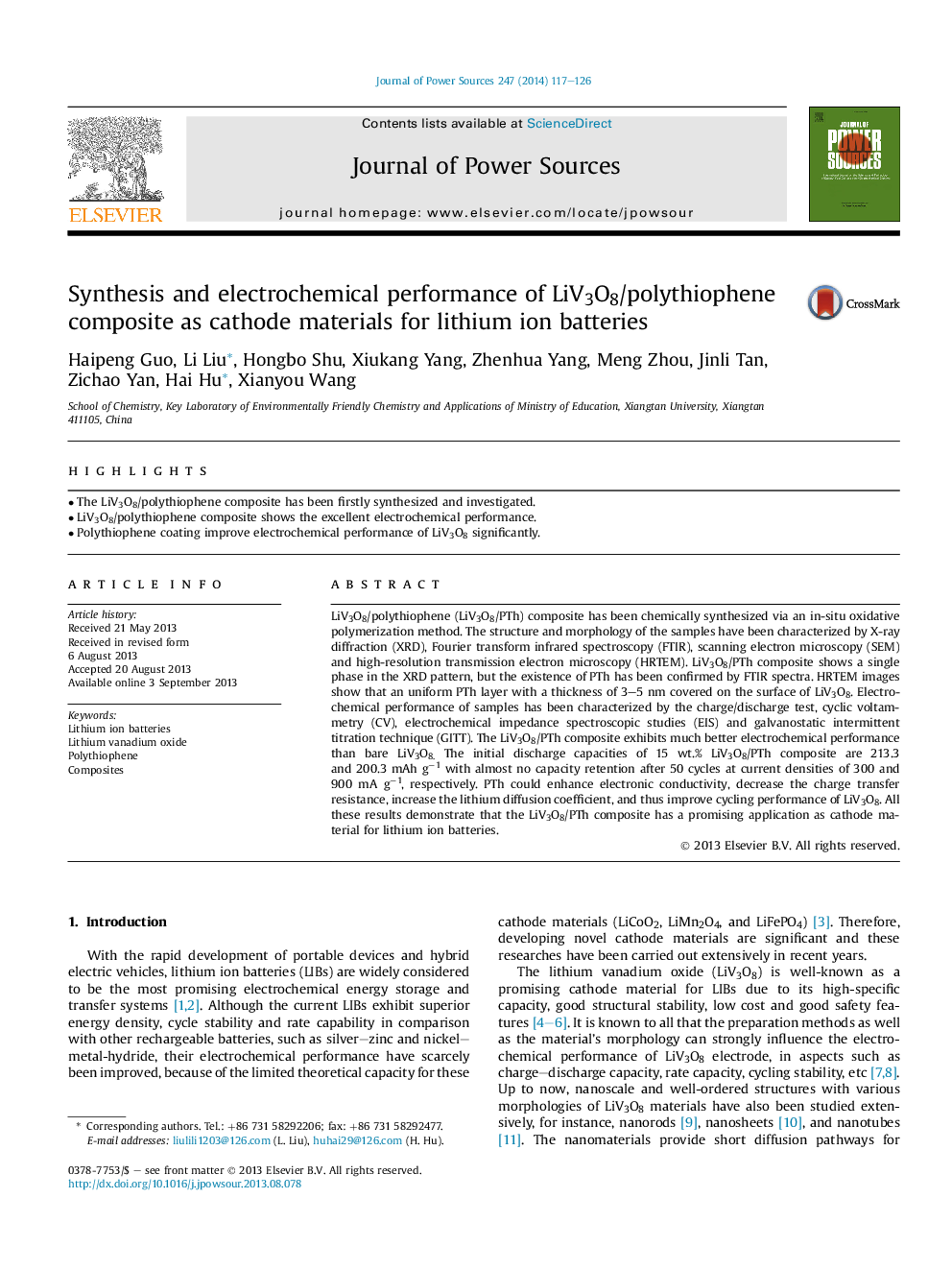| Article ID | Journal | Published Year | Pages | File Type |
|---|---|---|---|---|
| 7738910 | Journal of Power Sources | 2014 | 10 Pages |
Abstract
LiV3O8/polythiophene (LiV3O8/PTh) composite has been chemically synthesized via an in-situ oxidative polymerization method. The structure and morphology of the samples have been characterized by X-ray diffraction (XRD), Fourier transform infrared spectroscopy (FTIR), scanning electron microscopy (SEM) and high-resolution transmission electron microscopy (HRTEM). LiV3O8/PTh composite shows a single phase in the XRD pattern, but the existence of PTh has been confirmed by FTIR spectra. HRTEM images show that an uniform PTh layer with a thickness of 3-5 nm covered on the surface of LiV3O8. Electrochemical performance of samples has been characterized by the charge/discharge test, cyclic voltammetry (CV), electrochemical impedance spectroscopic studies (EIS) and galvanostatic intermittent titration technique (GITT). The LiV3O8/PTh composite exhibits much better electrochemical performance than bare LiV3O8. The initial discharge capacities of 15 wt.% LiV3O8/PTh composite are 213.3 and 200.3 mAh gâ1 with almost no capacity retention after 50 cycles at current densities of 300 and 900 mA gâ1, respectively. PTh could enhance electronic conductivity, decrease the charge transfer resistance, increase the lithium diffusion coefficient, and thus improve cycling performance of LiV3O8. All these results demonstrate that the LiV3O8/PTh composite has a promising application as cathode material for lithium ion batteries.
Related Topics
Physical Sciences and Engineering
Chemistry
Electrochemistry
Authors
Haipeng Guo, Li Liu, Hongbo Shu, Xiukang Yang, Zhenhua Yang, Meng Zhou, Jinli Tan, Zichao Yan, Hai Hu, Xianyou Wang,
